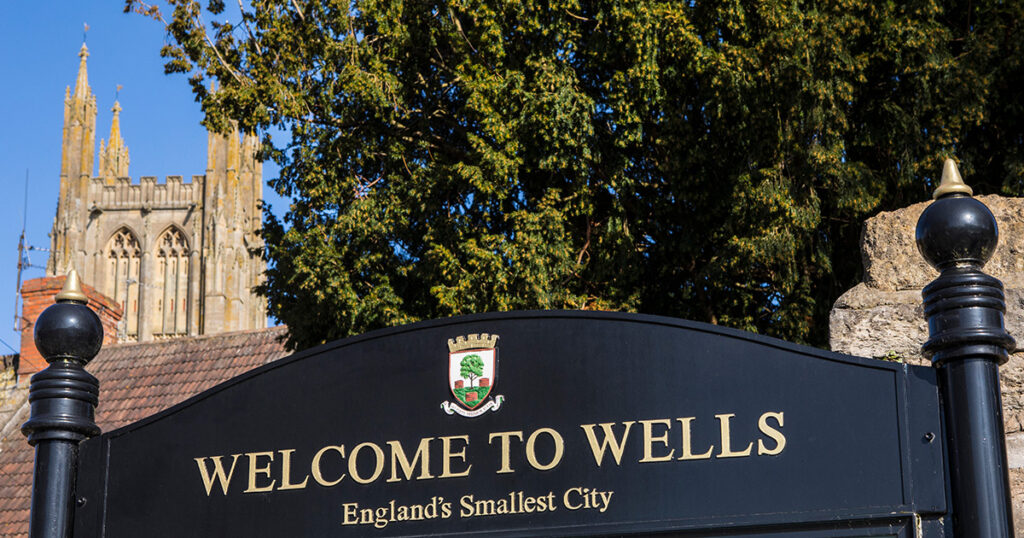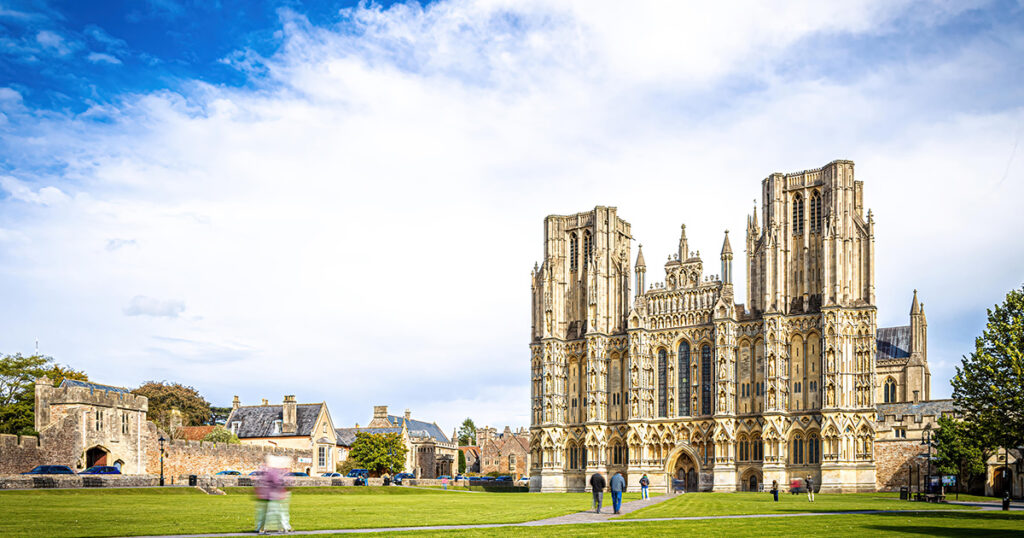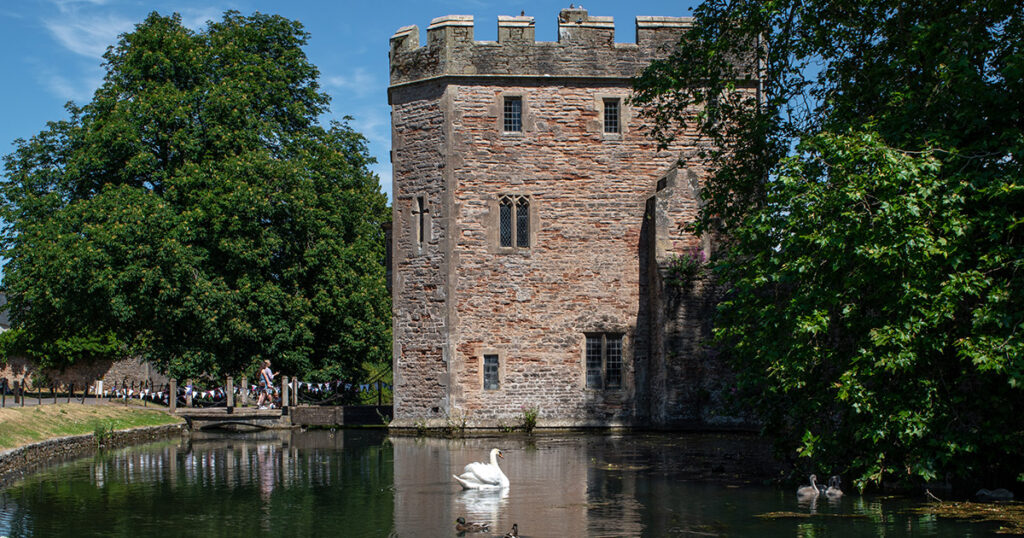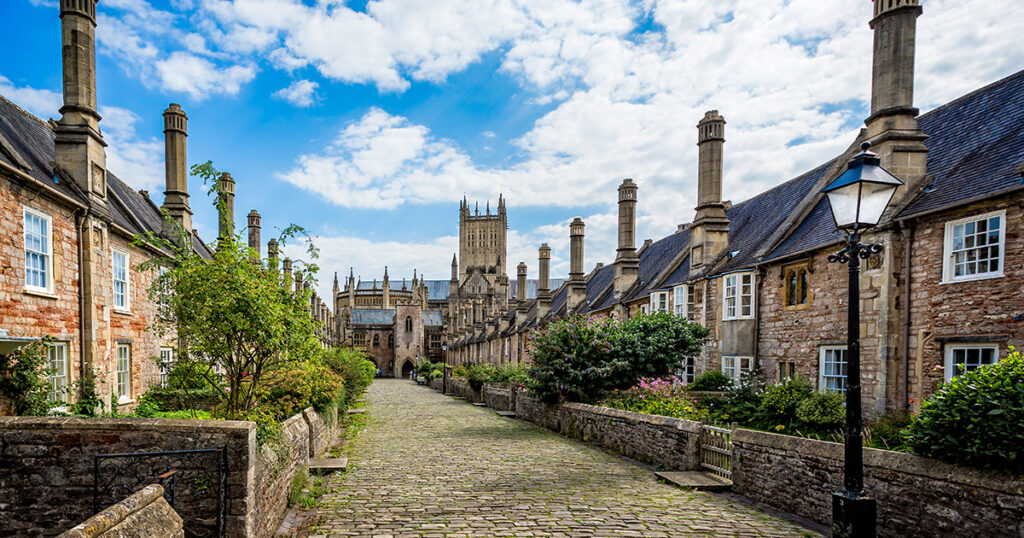Explore Wonderful Wells With Berrys Coaches

Probably one of the most spectacular drop off points on our route to the west country must be the city of Wells.
Currently enjoying a boom in tourism, it is an ideal destination for a weekend or short break. Close to several other drop off point for the Superfast 3 Service including Street and Glastonbury, Wells Cathedral is currently hosting a mass installation piece of artwork by the sculptor and artist Peter Walker. Thousands of paper doves carrying messages of hope and peace have been suspended from the Nave ceiling and music to go with the exhibition has been specially composed by David Harper. It is illuminated and will run until June 8th. There are around 18,000 doves on display.

There are also a number of events which have been organised around this exhibition including story times. Local schools are also being encouraged to make their own peace doves to hang in their classrooms, shops and windows. Entry to the exhibition is included in the admission to the cathedral with free entrance for under 18s.
The city is named after several wells which exist in the area and are said to have curative powers. The wells have been found in the grounds of the Bishops Palace and the cathedral. The third is now part of the monument which stands in the Market Square.
Wells has been part of our spiritual heritage for long time and as the smallest cathedral city in England there have probably been religious connections in this area since Roman times. A road was built by the Romans through Wells to Bristol and later on a Christian church was constructed and shrines changed to fit in with Christian beliefs. In the 8th century it was decided to build a minster church. However, in 1066 the cathedral lost its status which moved to Bath. Then in 1244 it was returned once again to city by King John.
The cathedral has been repaired and restored over the years and Wells still relies very much on its church community. It has a cathedral choir school and during the Second World War a prisoner of war camp was set up for Italians who had been captured during some of the desert campaigns. Many of them then stayed on in the area after the war ended and set up ice cream businesses and restaurants.

Considered by many to be the jewel in the crown of Somerset the Bishops Palace is well worth visiting as is Vicar’s Close. This can be found around the side of the cathedral and is said to be the oldest residential street in Europe. It used to have 44 residences but is now down to 27. Built for Bishop Ralph of Shrewsbury it has at one end an arched gate and also a chapel, library and hall. The hall was finished in 1348 and the houses added in the 14th and early 15th century. Used as priest homes they are still lived in today by the twelve men of the Vicar’s Choral plus at times organists, vergers and bell ringers serving the cathedral.
One of its major attractions of the Bishops Palace are the swans which have been trained to ring a bell when they need feeding. There has been a pair of swans in residence for around 150 years and they live in the moat. It is said that a bishop’s daughter originally taught the swans to ring the bell when they needed feeding. Currently there is a swan cam which has been set up so that people from all over the world can observe them. The current pair of Mute Swans, Grace and Gabriel, arrived in May 2019 from Swan Rescue South Wales and their new cygnets appeared on the 20th April this year.
The palace has been home to the Bishops of Bath and Wells in for over 800 years. A medieval building it is accessed by a flagstone drawbridge. With over 14 acres of gardens and the spectacular wells pools the building is said to date from the thirteenth century when a licence was granted to build the residence and Deer Park on the site.

Every Wednesday and Saturday you will find a market taking place in the square close to the cathedral. Here you can buy local produce. On a Wednesday there is a farmers’ market and at certain times during the year a funfair. Mary Rand, the Olympic long jump champion in 1964 and resident of Wells has a plaque in the pavement of the marketplace showing the length of her jump.
Wells has an impressive high street with lots of well-known names as well as plenty of independent shops.
Located on the southern edge of the Mendip Hills the city is 22 miles south-west of Bath and 23 miles south of Bristol with an excellent bus service connecting many of the towns in the area. If you are staying, then it has plenty of eating places from Weatherspoon’s close to the bus station to The Olive Tree in Sadler Street where you can enjoy a variety of vegetarian options. The ever-popular Sheep and Penguin can be found in Tucker Street or Rugantino which has been providing the city with excellent food since 1974. Started by Franco Rossi from Assisi in Umbria it is now run by his two sons Jon & Nick.
Wells is a wonderful place to visit as there is so much to do. If you like hiking, then you can leave from the Palace Fields and walk into a lovely village of Dulcote working your way back into Wells through the woods. Several other sort and longer walks and routes can be printed out from the Walking Britain website.
Used by film and tv companies as it has a number of prime locations dotted around the city which featured in the film Hot Fuzz. Recently it has been speculated that filming has been taking place for the new series of Wolf Hall.
Rich in history, culture and local tradition Wells is definitely one of Somerset crowning glories.


